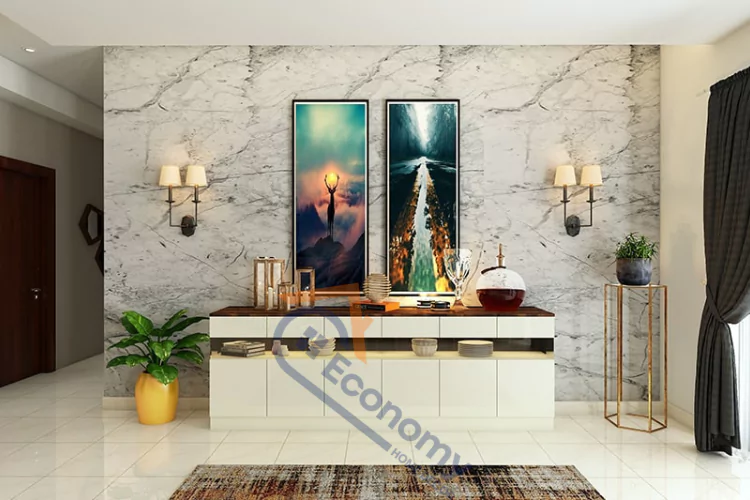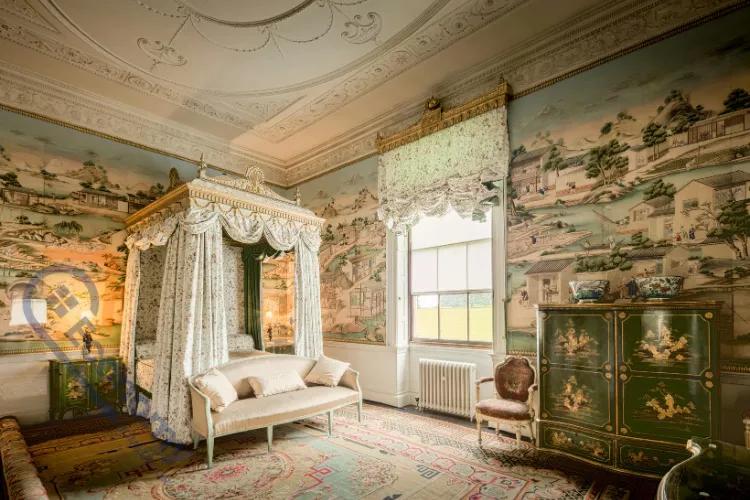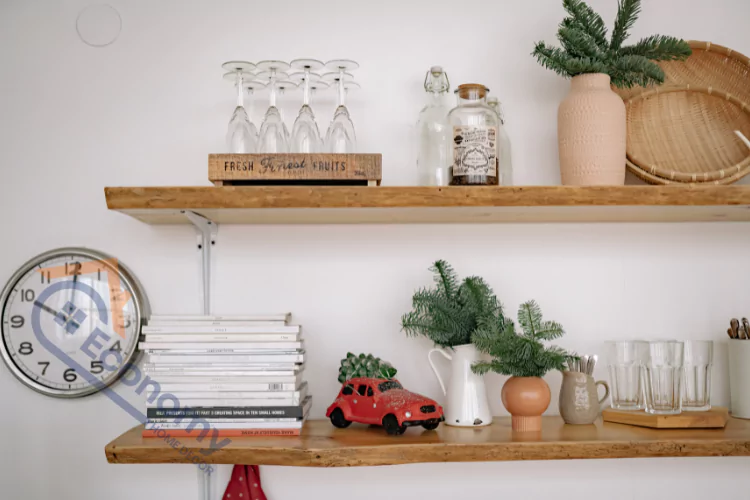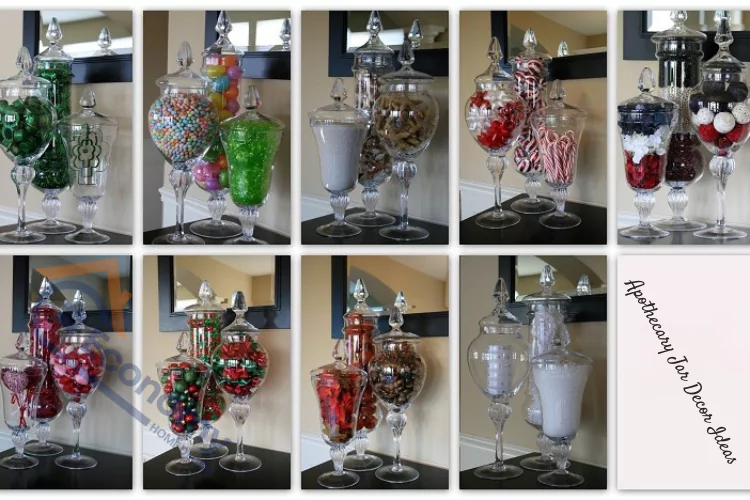Your home is more than just a place to sleep and eat—it’s your personal sanctuary, a reflection of your personality, and the backdrop for countless memories. Whether you’ve just moved into a new space or you’re ready to refresh your current one, interior decorating ideas can completely transform the way you feel about your home. The beauty of home decor interior design lies in its ability to make any space feel more comfortable, functional, and uniquely yours.
Creating a beautiful home doesn’t require a massive budget or professional help. With the right approach to interior decorating, you can achieve stunning results that reflect your personal style while maximizing both comfort and functionality. From choosing the perfect color palette to selecting furniture that serves multiple purposes, there are countless ways to enhance your living space. This comprehensive guide will walk you through practical interior decoration ideas that can help you transform every room in your house into a space you absolutely love.
Understanding Interior Decorating Basics
Before diving into specific room-by-room ideas, it’s essential to understand what is interior decoration and how it differs from interior design. Interior decorating focuses on the aesthetic elements of a space—colors, furniture, accessories, and layout—while interior design involves more structural changes and space planning. As a homeowner, you’re primarily working with interior decorating, which is both accessible and immediately impactful.
The foundation of successful interior decorating styles begins with understanding your personal preferences and lifestyle needs. Do you gravitate toward clean, minimalist lines, or do you prefer cozy, layered looks? Are you drawn to bold colors or neutral palettes? Consider how you use each space in your home and what mood you want to create. A successful interior decoration approach balances functionality with beauty, ensuring that your home not only looks great but also serves your daily needs effectively.
Start by assessing your current space objectively. What works well, and what feels off? Sometimes the issue isn’t the individual pieces but how they’re arranged or combined. Good interior decorating often involves working with what you have while strategically adding or rearranging elements to create a more cohesive and appealing environment.
Color Psychology in Home Interior Decor
Color is one of the most powerful tools in home interior decoration, capable of dramatically altering the mood and perceived size of any room. Understanding color psychology can help you make informed decisions that support both the function and feeling of each space. Warm colors like reds, oranges, and yellows create energy and intimacy, making them perfect for social spaces like dining rooms and living areas. Cool colors such as blues, greens, and purples promote relaxation and tranquility, ideal for bedrooms and bathrooms.
Neutral colors serve as the backbone of most successful interior decoration ideas. Whites, grays, beiges, and other neutral tones provide a versatile foundation that allows you to experiment with bolder accent colors through accessories, artwork, and textiles. This approach gives you flexibility to change your decor seasonally or as your tastes evolve without requiring major renovations.
When implementing interior decorating painting ideas, consider the 60-30-10 rule: use a dominant neutral color for 60% of the space, a secondary color for 30%, and a bold accent color for the remaining 10%. This creates visual balance while preventing any single color from overwhelming the space. Remember that lighting significantly affects how colors appear, so always test paint colors in different lighting conditions before making final decisions.
Living Room Interior Decorating Transformation
The living room often serves as the heart of the home, making it crucial to get the interior decorating lounge room ideas just right. Start with a focal point—this could be a fireplace, large window, piece of artwork, or entertainment center. Arrange your furniture to complement this focal point while encouraging conversation and comfortable movement through the space.
Seating arrangement is critical in living room house interior decoration ideas. Create conversation areas by positioning sofas and chairs to face each other rather than just facing the television. Add layers of lighting with table lamps, floor lamps, and overhead fixtures to create ambiance and ensure adequate task lighting. Don’t forget about texture—mix smooth and rough surfaces through throw pillows, blankets, and rugs to add visual interest and physical comfort.
Storage solutions can be both functional and beautiful in living room design. Ottoman storage, built-in shelving, and stylish baskets help maintain organization while contributing to the overall aesthetic. Consider the traffic flow through your living room and ensure pathways remain clear and intuitive. The key to successful living room interior decorating is balancing comfort, functionality, and style to create a space where everyone feels welcome and relaxed.
Dining Room Interior Decorating Excellence
Dining room interior decorating presents unique opportunities to create memorable experiences around food and conversation. The dining table naturally serves as the room’s focal point, but the surrounding elements—lighting, wall treatments, and accessories—determine the overall atmosphere. Consider installing a statement chandelier or pendant light fixture that provides adequate illumination while adding visual drama to the space.
Wall treatments in dining rooms can be more adventurous than in other areas of the home. Consider wallpaper with bold patterns, rich paint colors, or even a gallery wall of family photos and artwork. These elements create conversation starters and contribute to the room’s personality. When selecting furniture, ensure chairs are comfortable enough for extended sitting during meals and gatherings.
Table settings and centerpieces offer opportunities for seasonal interior decoration changes. Invest in quality dinnerware, linens, and serving pieces that reflect your style while remaining functional for everyday use. Consider adding a sideboard or buffet for additional storage and serving space. The goal of dining room interior decorating is creating an environment that encourages people to linger, connect, and enjoy both food and company in comfort and style.
Bedroom Interior Design Decor Ideas
Your bedroom should serve as a personal retreat that promotes rest and relaxation. Effective room interior decoration ideas for bedrooms focus on creating a calming atmosphere while reflecting your personal style. Start with a neutral or soothing color palette—soft blues, gentle grays, warm whites, or muted earth tones work well for promoting sleep and relaxation.
The bed is naturally the room’s focal point, so invest in quality bedding and consider a statement headboard. Layering different textures through pillows, throws, and blankets adds visual interest while increasing comfort. Ensure adequate storage with nightstands, dressers, and perhaps under-bed storage solutions to maintain the clean, uncluttered environment that supports good sleep.
Lighting in bedrooms should be layered and controllable. Combine overhead lighting with bedside lamps for reading and ambient lighting options like string lights or candles for evening relaxation. Consider blackout curtains or blinds to control natural light, and add mirrors strategically to reflect light and make the space feel larger. Personal touches like family photos, artwork, or plants make the bedroom truly feel like your own private sanctuary.
| Room Type | Primary Function | Key Design Elements | Color Recommendations |
|---|---|---|---|
| Living Room | Socializing, Relaxation | Comfortable seating, focal point, layered lighting | Warm neutrals with accent colors |
| Dining Room | Eating, Entertaining | Statement lighting, comfortable seating, storage | Rich, welcoming colors |
| Bedroom | Rest, Privacy | Quality bedding, blackout options, personal touches | Soft, calming tones |
| Kitchen | Cooking, Gathering | Functional layout, adequate lighting, easy-to-clean surfaces | Clean, bright colors |
| Bathroom | Hygiene, Self-care | Moisture-resistant materials, good ventilation, storage | Light, airy colors |
Kitchen Interior House Decoration
Kitchen interior house decoration must balance beauty with functionality since this space sees heavy daily use. Focus on creating an efficient work triangle between the sink, stove, and refrigerator while ensuring adequate counter space for food preparation. Choose materials that are both attractive and practical—quartz countertops, subway tile backsplashes, and hardwood or tile flooring that can handle spills and frequent cleaning.
Color schemes in kitchens should feel fresh and clean while complementing the rest of your home’s palette. White or light-colored cabinets create a timeless look that makes the space feel larger and brighter. Add personality through hardware, light fixtures, and decorative accessories. Consider open shelving to display attractive dishes or glassware, but balance this with closed storage for everyday items.
Lighting is crucial in kitchen design—combine ambient, task, and accent lighting to create a functional and inviting space. Under-cabinet lighting illuminates work surfaces, while pendant lights over islands or peninsulas add style and focused lighting. Don’t neglect the importance of ventilation and ensure your kitchen has adequate airflow to handle cooking odors and moisture.
Small Space Interior Decoration for Small House
Interior decoration for small house requires creativity and strategic thinking to maximize both function and style. The key is making every square foot count while avoiding clutter that can make small spaces feel cramped. Light colors on walls and ceilings help spaces feel larger, while mirrors strategically placed to reflect natural light can dramatically open up a room.
Multi-functional furniture is essential in small space decorating. Ottoman storage, expandable dining tables, murphy beds, and built-in seating with storage underneath serve dual purposes. Vertical space becomes crucial—use tall bookcases, wall-mounted shelves, and hanging storage to draw the eye upward and provide necessary storage without taking up floor space.
Choose furniture proportional to your space, and don’t be afraid to float furniture away from walls to create better traffic flow and more interesting arrangements. Keep window treatments simple to maximize natural light, and use consistent color schemes throughout connected spaces to create visual flow and make the overall area feel larger and more cohesive.
Bohemian Interior Decor Style Guide
Bohemian interior decor embraces creativity, individuality, and global influences to create spaces that feel collected and personal rather than perfectly coordinated. This style celebrates rich textures, warm colors, and eclectic combinations of furniture and accessories from different cultures and time periods. The key to successful bohemian decorating is layering—combining rugs, textiles, pillows, and wall hangings to create depth and visual interest.
Color palettes in bohemian interiors often feature jewel tones like deep purples, rich oranges, emerald greens, and golden yellows, balanced with warm neutrals and natural materials. Don’t be afraid to mix patterns—florals, geometrics, and ethnic prints can coexist beautifully when they share similar color undertones. Natural materials like wood, rattan, and jute add texture and warmth to bohemian spaces.
Plants play a crucial role in bohemian home interior decorating, bringing life and natural beauty into the space. Mix hanging plants, floor plants, and small potted varieties to create an indoor garden feeling. Vintage and handmade items add authenticity to the bohemian look—scour thrift stores, flea markets, and artisan markets for unique pieces that speak to you personally.
Budget-Friendly Interior Decorating Ideas
Creating beautiful interior decorating doesn’t require a substantial budget when you approach it strategically. Start by shopping your own home—rearranging existing furniture and accessories can create entirely new looks without spending a penny. Consider moving artwork, lamps, or decorative objects between rooms to refresh multiple spaces simultaneously.
DIY projects offer significant savings while adding personal touches to your home decor design interior. Paint is one of the most cost-effective ways to transform a space—whether you’re painting walls, furniture, or accessories. Sewing simple pillow covers, creating artwork, or refinishing existing furniture can provide custom looks at fraction of retail costs.
Thrift stores, consignment shops, and online marketplaces offer treasure troves of affordable decor items. Focus on quality pieces that can be updated with paint, new hardware, or reupholstering. Mix these budget finds with a few higher-quality investment pieces to create a sophisticated look that doesn’t reveal its modest budget. Remember that good types of interior decoration focus more on thoughtful arrangement and personal style than expensive items.
Seasonal Home Interior Decorating
Adapting your home interior decor seasonally keeps your space feeling fresh and connected to the natural world outside. Spring decorating focuses on renewal and growth—introduce fresh flowers, lighter fabrics, and brighter colors after winter’s heavier textures and darker tones. Summer decorating emphasizes airiness and outdoor connections through natural materials, tropical plants, and coastal-inspired accessories.
Fall interior decoration ideas embrace warmth and harvest themes through rich colors like deep oranges, burgundies, and golden browns. Add cozy textiles like wool throws and velvet pillows, and incorporate natural elements like pumpkins, pinecones, and autumn leaves. Winter decorating focuses on creating warmth and intimacy through layered lighting, heavier fabrics, and evergreen elements that bring life to dormant outdoor landscapes.
The key to successful seasonal decorating is making changes that feel significant without requiring complete room overhauls. Focus on easily changeable elements like throw pillows, artwork, table centerpieces, and accessories. Store seasonal items organized by season to make transitions smooth and enjoyable rather than overwhelming.
Lighting Design for Interior Decoration
Proper lighting is fundamental to successful interior decorating ideas and can dramatically affect how colors, textures, and furniture appear in your space. Layer different types of lighting—ambient, task, and accent—to create flexible illumination that serves various needs throughout the day. Ambient lighting provides general illumination, task lighting serves specific activities like reading or cooking, and accent lighting highlights architectural features or artwork.
Natural light should be maximized whenever possible through strategic window treatments and mirror placement. However, artificial lighting allows you to control mood and functionality regardless of time of day or weather conditions. Consider the color temperature of your light bulbs—warmer temperatures (2700K-3000K) create cozy, intimate atmospheres, while cooler temperatures (3500K-4100K) provide crisp, energizing light suitable for task-oriented spaces.
Dimmer switches offer invaluable flexibility, allowing you to adjust lighting intensity based on activities and desired mood. Statement light fixtures can serve as sculptural elements that contribute to your room’s aesthetic while providing necessary illumination. Don’t overlook the importance of lamp placement—poorly positioned lighting can create harsh shadows or inadequate task illumination that makes even beautifully decorated spaces feel uncomfortable.
Window Treatments and Interior Decorating
Window treatments serve both functional and aesthetic purposes in residential interior decorator projects, controlling light and privacy while contributing significantly to your room’s style. The scale and style of your window treatments can dramatically affect how large and finished a room appears. Hanging curtains close to the ceiling rather than just above the window frame makes ceilings appear higher and windows more substantial.
Choose window treatment styles that complement your overall decorating approach—sleek blinds or simple panels work well in contemporary spaces, while layered curtains with valances suit traditional or romantic decorating styles. Consider the practical needs of each room when selecting treatments—bedrooms require better light blocking than living areas, and bathrooms need moisture-resistant materials.
Color and pattern in window treatments offer opportunities to introduce visual interest or reinforce your color scheme. Solid colors provide flexibility and longevity, while patterns can serve as focal points or tie together other patterned elements in the room. Remember that window treatments are often among the largest fabric elements in a room, so they significantly impact the overall color balance and visual weight of your interior decoration.
Key Takeaways
Successful interior decorating combines personal style with practical functionality to create homes that truly serve their inhabitants’ needs while reflecting their personalities. Remember these essential principles as you embark on your decorating journey:
- Start with a plan: Understand your personal style, assess your needs, and create a cohesive vision before making purchases
- Color is powerful: Use the 60-30-10 rule and consider lighting when selecting colors for maximum impact
- Layer your lighting: Combine ambient, task, and accent lighting for flexibility and functionality
- Mix textures and patterns: Add visual interest through thoughtful combinations of different materials and designs
- Scale matters: Choose furniture and accessories proportional to your space and arrange them to encourage good traffic flow
- Budget wisely: Focus on quality investment pieces mixed with budget-friendly finds and DIY projects
- Personalize your space: Include meaningful artwork, photos, and accessories that reflect your life and interests
Frequently Asked Questions
Interior decorating focuses on the aesthetic elements like color, furniture, and accessories, while interior design involves structural changes and space planning. Most homeowners work primarily with decorating concepts.
Start with colors you naturally gravitate toward, consider the mood you want to create, and use the 60-30-10 rule (60% dominant neutral, 30% secondary color, 10% accent color) for balanced results.
Paint walls or furniture, rearrange existing pieces, shop thrift stores for unique finds, create DIY artwork, and focus on easily changeable accessories like pillows and throws.
Use light colors, maximize natural light, add mirrors strategically, choose furniture proportional to the space, and utilize vertical storage to draw the eye upward.
Begin with one room at a time, establish a cohesive color palette throughout the home, invest in quality basics first, and add personal touches gradually as you live in the space.
Major updates every 5-7 years keep homes feeling fresh, but seasonal changes to accessories and textiles can provide regular refreshment without major expense.
Conclusion
Transforming your home through thoughtful interior decorating ideas is one of life’s most rewarding projects. Whether you’re working with a generous budget or looking for creative ways to refresh your space economically, the principles of good design remain constant: balance function with beauty, reflect your personal style, and create environments that support the way you actually live.
Remember that successful home interior decoration is a process, not a destination. Your home should evolve with your needs, preferences, and life changes. Start with small changes that make you happy, build on what works, and don’t be afraid to experiment with new ideas. The most beautiful homes are those that tell the story of the people who live in them, filled with pieces that bring joy and serve practical purposes.
Take inspiration from various interior decorating styles, but don’t feel constrained by rigid rules or trends. Your home should be a reflection of you—your experiences, travels, relationships, and dreams. By applying these interior decoration ideas thoughtfully and consistently, you’ll create a home that not only looks beautiful but truly feels like the perfect backdrop for your life’s most important moments.





